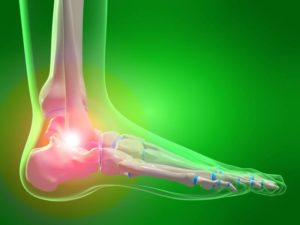Due to reckless drivers, weather conditions, or even freak accidents, car accidents are inevitable in Southern California. Even if you escape “injury” free, the fact is, you’re not without injury. Whiplash is a common consequence of car accidents, but too often, victims ignore the seriousness of the condition. Perhaps it’s due to the shock of just being in a car accident? Perhaps it’s due to the gratitude of making it out alive? Perhaps it’s due to confusion as whether any injuries arose? Whatever the victim’s reasoning may be, whiplash is very common; and when its symptoms go unnoticed, bodily trauma can manifest in the long run.

What is whiplash? Well, in simplified terms, whiplash is a soft-tissue injury to the neck after a sudden and rapid movement of the head and neck forward and backward. You see, when you’re in an accident, you may experience an abrupt acceleration-deceleration force. This force, in turn, will throw your head and neck forward and then backward. Even if you’re driving 5mph and wearing your seat belt, such a motion can strain your neck. Although you may not feel it right then, over days, weeks, or even longer, you’ll notice its affects, but by then, more damage may have come about. Now imagine if your head is turned while it’s jolting forward and backward, can you see all the underlying injury taking place?
So what are the symptoms? Symptoms may include headaches, dizziness, neck pain and/or stiffness, burning or prickling sensation, shoulder and back pain, or even injuries to the muscles, ligaments, and facet joints. Other symptoms, less common though, are irritability, ringing in the ear, difficulty sleeping, and poor memory and concentration.
That’s why we’ve said it before and we’ll say it again, don’t mask these pains after a car accident with over the counter pain killers without a chiropractic evaluation. These masked pains can be signs of injury. Having a chiropractor, as Dr. Mehr of Foothill Family Chiropractic, evaluate the injury and its significance is important to achieve proper treatment and avoid long-term damage.
To prevent whiplash injury, it’s best to lean your head back into your headrest and look straight ahead when anticipating a crash. Additionally, before you hit the road, make sure your head rest is at a proper height, your seat upright, and seatbelt fastened. Also, if possible, try to purchase a vehicle with a good rear-crash safety rating and of course, don’t tailgate.
Furthermore, it’s recommended that to achieve quicker recovery, you should continue to partake in your regular activities as opposed to becoming stagnant and focusing on the pain. The Doctor may also recommend certain neck exercises to perform at home, using a heating pad, and he may have you avoid wearing a neck collar which could slow recovery.
Interesting Fact…More than 3 million new whiplash cases occur each year and more than 50% progress into chronic symptoms, leading many to partial disability. If you find yourself in a car accident, or if you were in a car accident, contact our office for an evaluation right away.
Note, although we’re currently speaking of vehicle accidents, whiplash can result from various accidents, including horseback riding, riding a rollercoaster, sports activities, slip and falls, and assaults.

